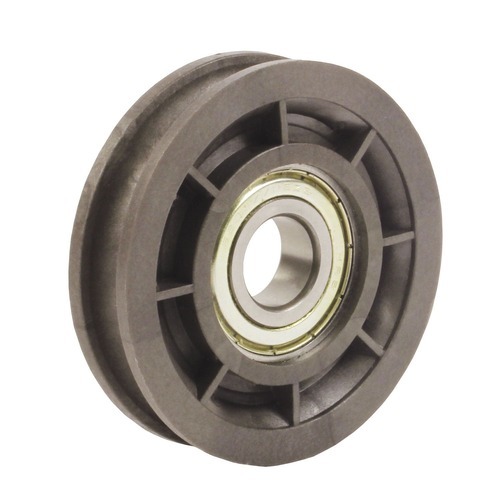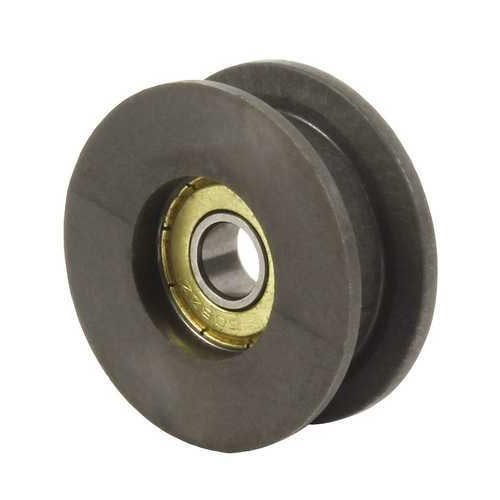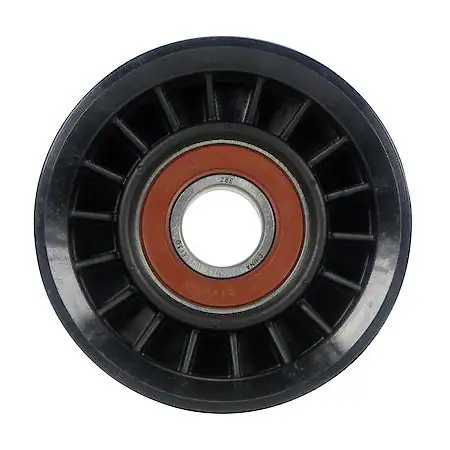Product Description
Deep groove ball bearing
| NSK | A | B | C | D | D2 | S2 | |||
| WN2358-1S | 3.59 | 0.53 | 1.53 | 0.6267 | 0.4739 | 1.44 | |||
| WN2364-7S | 3.64 | 0.59 | 1.52 | 0.6267 | 0.4739 | 1.43 | |||
| WN2375-4S | 3.76 | 0.56 | 1.67 | 0.6267 | 0.4739 | 1.59 | |||
| WN2388-2S | 3.89 | 0.73 | 1.63 | 0.6267 | 0.4739 | 1.55 | |||
| 665331 | WN2397S | 3.98 | 0.98 | 1.46 | 0.6267 | 0.4739 | 1.36 | ||
| WN2405S | 4.06 | 0.65 | 1.88 | 0.6267 | 0.4739 | 1.79 | |||
| WN2413-2S | 4.13 | 1.21 | 1.39 | 0.6267 | 0.4739 | 1.26 | |||
| WN2419S | 4.19 | 0.87 | 1.8 | 0.6267 | 0.4739 | 1.72 | |||
| WN2434-4S | 4.35 | 0.84 | 1.97 | 0.6267 | 0.4739 | 1.9 | |||
| WN2461-1S | 4.62 | 0.72 | 2.37 | 0.6267 | 0.4739 | 2.29 | |||
| WN2479S | 4.8 | 1.24 | 2.03 | 0.6267 | 0.4739 | 1.95 | |||
| WN3399-2S | 4 | 0.69 | 1.78 | 0.6275 | 0.4739 | 1.7 | |||
| WN63975 | 3.98 | 0.98 | 1.46 | 0.62 | 0.4744 | 1.36 | |||
| NSK | A | B | C | D | |||||
| 885154 | W2289 | 2.89 | 0.16 | 1.2 | 0.6267 | ||||
| 885165 | W2325 | 3.25 | 0.16 | 1.56 | 0.6267 | ||||
| W2325-3 | 3.55 | 0.67 | 1.35 | 0.6267 | |||||
| 885330 | W2366 | 3.66 | 0.73 | 1.4 | 0.6267 | ||||
| W2371 | 3.71 | 0.69 | 1.5 | 0.6267 | |||||
| W2375-3 | 3.76 | 0.56 | 1.67 | 0.6267 | |||||
| w-s series | |||||||||
| NSK | A | B | C | D | D1 | S1 | D2 | S2 | |
| 885122 | W2334S | 3.35 | 0.51 | 1.3 | 0.6267 | 0.4739 | 1.18 | ||
| W2346-1S | 3.47 | 0.49 | 1.45 | 0.6267 | 0.4739 | 1.33 | |||
| W2346-2S | 3.47 | 0.56 | 1.38 | 0.6267 | 0.4739 | 1.28 | |||
| W2355S | 3.55 | 0.61 | 1.41 | 0.6267 | 0.4739 | 1.33 | |||
| W2364-5S | 3.64 | 0.65 | 1.46 | 0.6267 | 0.4739 | 1.36 | |||
| 885477 | W2364S | 3.64 | 0.99 | 1.12 | 0.6267 | 0.4739 | 1.02 | ||
| W2366-1S | 3.66 | 0.65 | 1.49 | 0.6267 | 0.4739 | 1.33 | |||
| wn series | |||||||||
| NSK | A | B | C | D | |||||
| WN2269 | 2.69 | 0.99 | 0.18 | 0.6267 | |||||
| WN2366-4 | 3.66 | 0.73 | 1.4 | 0.6267 | |||||
| 665343 | WN2375-3 | 3.76 | 0.56 | 1.67 | 0.6267 | ||||
| WN2401-5 | 4.02 | 0.67 | 1.82 | 0.6267 | |||||
| WN2410 | 4.1 | 1.03 | 1.54 | 0.6267 | |||||
| 665329 | WN2415-1 | 4.15 | 0.8 | 1.82 | 0.6267 | ||||
| WN2434 | 4.35 | 0.84 | 1.97 | 0.6267 | |||||
| WN2447 | 4.48 | 1.42 | 1.52 | 0.6267 | |||||
| WN2488-1 | 4.49 | 0.75 | 2.21 | 0.6267 | |||||
| WN2450-2 | 4.5 | 1.26 | 1.71 | 0.6267 |
/* January 22, 2571 19:08:37 */!function(){function s(e,r){var a,o={};try{e&&e.split(",").forEach(function(e,t){e&&(a=e.match(/(.*?):(.*)$/))&&1
| Rolling Body: | Water Pump Bearing |
|---|---|
| The Number of Rows: | Single |
| Material: | Bearing Steel |
| Load Direction: | Radial Bearing |
| Separated: | Separated |
| Trademark: | OEM |
| Samples: |
US$ 0/Piece
1 Piece(Min.Order) | |
|---|
| Customization: |
Available
| Customized Request |
|---|

What advantages do tension pulleys offer in material handling and conveyor systems?
Tension pulleys offer several advantages in material handling and conveyor systems, contributing to efficient and reliable operation. Here's a detailed explanation of the advantages provided by tension pulleys in these systems:
1. Proper Belt Tension: Tension pulleys ensure the proper tension in conveyor belts used in material handling systems. Maintaining optimal tension is crucial for smooth and efficient belt operation. Tension pulleys help prevent belt sagging or excessive slack, ensuring consistent contact between the belt and pulleys, and maximizing the grip and power transfer. Proper belt tension minimizes slippage, enhances belt life, and reduces the risk of jams or disruptions in material flow.
2. Belt Tracking: Tension pulleys assist in maintaining proper belt tracking in conveyor systems. They are often utilized in conjunction with other pulleys, such as idler or snub pulleys, to guide the belt along the desired path. Tension pulleys help ensure that the belt remains aligned and centered on the conveyor, preventing it from wandering off track. Proper belt tracking minimizes belt wear, reduces the risk of damage to the conveyor structure, and improves overall system efficiency.
3. Load Distribution: Tension pulleys contribute to even load distribution across the conveyor belt. They help distribute the tension forces evenly along the belt, preventing localized stress concentrations. This balanced load distribution enhances belt life and minimizes the risk of premature failure or damage. Tension pulleys also ensure that the load is evenly transferred to the supporting structure, preventing excessive strain on specific components.
4. Tension Adjustment: Tension pulleys allow for easy tension adjustment in conveyor systems. Adjustable tension pulleys enable operators to fine-tune the belt tension based on the specific requirements of the material being conveyed. This flexibility ensures optimal tension for various load conditions, preventing excessive tension that can lead to belt damage or insufficient tension that can result in belt slippage. Tension adjustment also facilitates the accommodation of changes in material characteristics or system configurations.
5. Reduced Belt Wear: By maintaining proper tension, tension pulleys help reduce belt wear in material handling and conveyor systems. Insufficient tension can cause belt slippage, leading to accelerated wear and tear. Conversely, excessive tension can result in increased friction and premature belt wear. Tension pulleys ensure the right balance of tension, minimizing belt abrasion and extending belt life. Reduced belt wear translates to lower maintenance costs and improved system reliability.
6. Minimized Noise and Vibrations: Tension pulleys contribute to noise and vibration reduction in material handling and conveyor systems. Properly tensioned belts experience reduced vibrations and oscillations, resulting in quieter operation. The damping effect provided by tension pulleys helps minimize noise levels, creating a more comfortable and productive work environment. Reduced vibrations also contribute to improved system stability and longevity.
7. Improved Efficiency: Overall, tension pulleys enhance the efficiency of material handling and conveyor systems. By maintaining proper belt tension, they optimize power transfer, minimizing energy losses associated with slippage or excessive tension. Efficient power transmission results in improved system performance, reduced downtime, and enhanced productivity. Tension pulleys also contribute to smoother material flow, reducing the risk of jams or blockages that can disrupt operations.
In summary, tension pulleys offer several advantages in material handling and conveyor systems, including proper belt tension, belt tracking, load distribution, tension adjustment, reduced belt wear, minimized noise and vibrations, and improved system efficiency. Their role in maintaining optimal tension and facilitating smooth belt operation enhances the reliability, productivity, and longevity of material handling and conveyor systems.

How do tension pulleys impact the performance of woodworking and milling machines?
Tension pulleys play a significant role in the performance of woodworking and milling machines, particularly in maintaining proper tension and alignment of belts that drive various components. Here's a detailed explanation of how tension pulleys impact the performance of these machines:
In woodworking and milling machines, tension pulleys are commonly used in belt-driven systems to transmit power from the motor to the cutting tools or other moving parts. These pulleys help ensure efficient power transfer, prevent belt slippage, and maintain the required tension for optimal performance. Here are some key ways in which tension pulleys impact the performance of woodworking and milling machines:
1. Belt Tension: Tension pulleys are responsible for maintaining the correct tension in the belts that drive the machine's components. Proper belt tension is crucial for achieving accurate and consistent results. If the belt tension is too loose, it can result in belt slippage, reduced power transmission, and compromised cutting performance. On the other hand, excessive belt tension can cause excessive wear on the belts, bearings, and other components. Tension pulleys help maintain the optimal tension, ensuring reliable power transmission and minimizing performance issues.
2. Belt Alignment: Tension pulleys also contribute to the proper alignment of belts in woodworking and milling machines. Misaligned belts can lead to uneven wear, reduced cutting accuracy, and increased vibration. Tension pulleys guide the belts and help maintain their alignment, ensuring smooth and precise operation. They minimize the risk of belt drifting or slipping off the pulleys, which can cause damage to the machine and affect its performance.
3. Power Transmission Efficiency: By maintaining the proper tension and alignment of belts, tension pulleys optimize power transmission efficiency in woodworking and milling machines. Efficient power transfer is essential for achieving consistent cutting performance, especially when working with dense or hard materials. Tension pulleys minimize energy losses due to belt slippage or inadequate tension, maximizing the power delivered to the cutting tools or other driven components. This results in improved overall performance and productivity of the machine.
4. Noise and Vibration Reduction: Well-maintained tension pulleys contribute to reducing noise and vibration in woodworking and milling machines. Properly tensioned belts and aligned pulleys operate smoothly, minimizing undesirable vibrations and noise levels during operation. This not only improves operator comfort but also helps prolong the lifespan of the machine's components by reducing unnecessary stress and wear.
5. Maintenance and Reliability: Tension pulleys themselves require regular maintenance to ensure their reliability and performance. Routine inspections, lubrication, and replacement of worn components are essential to prevent pulley failure or performance degradation. By maintaining the tension pulleys in good condition, the overall reliability and longevity of the woodworking and milling machines are enhanced.
It is important to note that tension pulleys should be selected appropriately based on the specific requirements of the woodworking or milling machine. Factors such as belt type, load, speed, and environmental conditions should be considered to ensure the pulleys can handle the demands of the application effectively.
In summary, tension pulleys have a significant impact on the performance of woodworking and milling machines. They help maintain proper belt tension, alignment, and power transmission efficiency, resulting in improved cutting accuracy, reduced vibrations, and enhanced overall machine reliability.

What types of belts or cables are typically used with tension pulleys?
Tension pulleys, also known as idler pulleys or belt tensioners, are designed to work in conjunction with specific types of belts or cables. The choice of belt or cable depends on the application, load requirements, environmental conditions, and other factors. Here's a detailed explanation of the types of belts or cables that are typically used with tension pulleys:
1. V-Belts: V-belts, also known as Vee belts, are a common type of belt used with tension pulleys. They have a trapezoidal cross-section and are designed to fit into the groove of the pulley wheel. V-belts are commonly used in automotive applications, industrial machinery, and power transmission systems.
2. Serpentine Belts: Serpentine belts are flat, wide belts with a ribbed surface on one side. They are used in modern automotive engines to drive multiple components such as the alternator, air conditioning compressor, power steering pump, and water pump. Tension pulleys for serpentine belts are designed to accommodate the ribbed surface and maintain proper tension across the entire belt.
3. Timing Belts: Timing belts, also known as toothed belts, have a series of evenly spaced teeth on the inner surface. They are used in applications that require precise synchronization of the rotational motion, such as in internal combustion engines. Tension pulleys for timing belts are designed with toothed surfaces that match the teeth on the belt, ensuring proper engagement and tension control.
4. Flat Belts: Flat belts are simple, flat belts without any V-grooves or teeth. They are used in a variety of applications, including conveyors, industrial machinery, and printing presses. Tension pulleys for flat belts provide a smooth surface for the belt to run on and maintain tension through contact friction.
5. Cables and Wire Ropes: Tension pulleys can also be used with cables or wire ropes in certain applications. These cables are typically made of steel or other high-strength materials and are used for lifting, pulling, or tensioning purposes. Tension pulleys for cables or wire ropes feature grooves or channels that guide and support the cable, ensuring proper tension and minimizing wear.
6. Other Specialty Belts: Depending on the specific application, tension pulleys may be used with other specialty belts. Examples include round belts, poly-V belts, and multi-ribbed belts. These belts are designed for specific purposes, such as high-speed applications, high torque transmission, or compact designs. Tension pulleys for specialty belts are engineered to match the unique characteristics and requirements of these belts.
In summary, tension pulleys are used with a variety of belts or cables, including V-belts, serpentine belts, timing belts, flat belts, cables, wire ropes, and other specialty belts. The design of the tension pulley is tailored to the specific type of belt or cable, ensuring proper engagement, tension control, and reliable operation in various applications and industries.


editor by CX
2024-04-25











